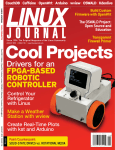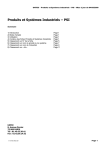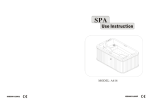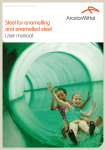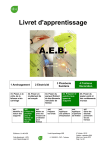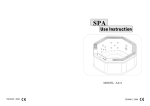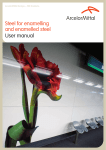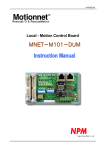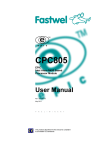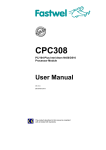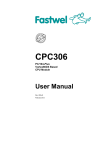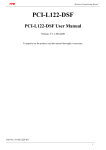Download Sollight® User Manual
Transcript
ArcelorMittal Flat Carbon Europe Sollight® User Manual user manual Sollight® Sollight® User Manual 1 2 3 Sollight® and its applications 1.1 Description 1.2 Production process 1.3 Presentation of the Sollight® range 1.4 Building sector 1.5 General industry 1.6 Railway rolling stock 3 3 3 4 4 4 4 Performance 2.1 Rigidity / weight ratio 2.2 Durability 2.3 Temperature range 2.4 Thermal and electrical insulation 2.5 Fire performance 2.6 Acoustic performance 2.7 Impact resistance (anti-vandalism) 2.8 Magnetic properties 2.9 Safety 2.10 Recycling 5 5 6 6 7 7 7 8 8 8 8 Processing 3.1 Cutting 3.2 Direct bending (without machining) 3.3 Reverse bending 3.4 Bending with machining (milling) 3.5 Roll bending 3.6 Roll forming 3.7 Joining 3.8 Painting 3.9 Examples of use 9 9 10 11 12 12 12 12 12 12 2 1 Sollight® and its applications For several years now, ArcelorMittal has been developing a range of composite products that widen the scope and performance of steel: Sollight® is the latest in this range. Sollight® is a steel / polymer composite; it is the only thin flat steel product that offers a significant reduction in the weight of parts subjected to bending loads (~50%). To achieve this, thin steel sheets (skins) are combined with and complement a thermoplastic polymer (core) to form a sandwich structure, which considerably increases the inertia of the compound, while keeping the mass low. 1.1 Description Sollight® is a composite sandwich product consisting of: • 2 thin steel pre-painted sheets (less than or equal to 0.4 mm thick) • 1 thermoplastic polymer core, 1 to 1.8 mm thick Pre-painted steel 0.25 to 0.4 mm thick Thermoplastic polymer 1 to 1.8 mm thick The product is delivered in coils. 1.2 Production process Sollight® is produced by a continuous process in which a “sandwich” composite consisting of a polymer film inserted between two pre-painted steel strips – paid out from two coils – is passed through heated rolls. The composite is then rewound after cooling. User Manual Sollight® – ArcelorMittal 3 1 Sollight® and its applications Standard size(1) Typical size for railways, General Industry and interior building Typical size for exterior building(2) Total thickness (mm) Width (mm) Polymer thickness (mm) Steel thickness (mm) Zinc coating (g/m²) Specific mass (kg/m²) Bending stiffness Bending modulus (MPa) 2 1220 1.5 0.25 Z100 5.3 88341 120590 2.6 1220 1.8 0.4 Z225 7.98 223385 138789 2.3 1220 1.5 0.4 Z225 7.71 166615 149539 (1) For other sizes, please contact us. (2) Standard colour = White G9002; for other colours, please contact us. 1.3 Presentation of the Sollight® range General industry The reverse side is coated with a standard primer. Sollight® has a wide variety of uses; it can be considered for any application that requires a flat surface with good rigidity, such as equipment casings. It can advantageously replace thick aluminium parts. Finally, where lightness is a requisite, it provides a very effective lightweight steel solution with high rigidity. 1.4 Its acoustic properties are a definite advantage for machine casings and cowlings. Different pre-painted finishes are available for the guaranteed surface: • Primer for post-painting or bonding • Polyester for industry or the building sector Building sector Sollight® can be used in the construction of facade items (boxes, curved wall cladding, bands etc). The larger sizes can also be used for applications such as ceiling tiles or interior linings (pillars etc). Advantages: • Its aesthetic properties (flatness, pre-painted finishes) make this a high-quality product. • Its high rigidity means it can be used with large spans, reducing the need for panel supporting framework. • Its formability and ease of installation facilitate the adaptation of the design to the shapes of the building. • It is easy to handle and safe to work, thanks to its low weight and smooth, blunt edges. • Its vibration insulation properties reduce impact noise. 4 1.5 User Manual Sollight® – ArcelorMittal 1.6 Railway rolling stock In this sector, the need for lighter structures and lower costs is a decisive factor (penalties for excess weight). The acoustic properties and fire performance offered by Sollight® are also important advantages. Finally, Sollight® is simple to process, thus facilitating adaptation to modifications in the design. Sollight® can be used for linings, particularly for ceiling tiles, in all types of rolling stock (High Speed Trains, trams etc). 2 Equivalent Rigidity Modulus (Eeq in MPa) 0 5000 10000 Performance 15000 2.1 Rigidity / weight ratio Sollight® is a steel product that provides an excellent compromise between rigidity and weight. The flexural rigidity of a sandwich structure subjected to a bending load, Df, can be expressed by the following simplified formula: Flexural rigidity Steel (2 mm) Aluminium (2 mm) Sollight® (2 mm) % 0 10 20 30 100 (unit width) where: E= 210 000 MPa, Young’s modulus for steel = 0.3, Poisson’s coefficient for steel t = thickness of steel skins h= total thickness of Sollight® d= h - t This formula shows the notable effect of the core thickness (squared) on rigidity. The equivalent rigidity modulus of Sollight® can be expressed as: Rigidity / weight Steel (2 mm) Aluminium (2 mm) Sollight® (2 mm) Equivalent Rigidity Modulus (Eeq in MPa) 0 User Manual Sollight® – ArcelorMittal 5000 10000 15000 In the two tables on the left, the various products in the Sollight® range are compared with monolithic materials of the same thickness. 5 2 Performance 2.2 2.3 Durability Temperature range The performance of Sollight® at different temperatures is determined by the thermo-mechanical behaviour of its polymer core. The standard product is not suitable for use at temperatures below -20°C, due to the brittleness of the core at low temperatures. At the other end of the range, the polyfinish mer melts at around 160°C, but softening occurs at a lower primer temperature. Thus, 80°C is usually considered the maximum (anti-corrosion treatment) temperature for non-continuous use. The skin on each side of the Sollight® composite is made of pre-painted steel sheet. The organic coatings are applied over a crack-resistant galvanised layer. The pre-painting systems used for Sollight® ensure good resistance to forming stresses and to aggressive environments. zinc steel substrate zinc polymer core Corrosion protection is provided both by the galvanised substrate and by the corrosion-resistant primer applied to each steel skin. As the sheet is thin, the cut edges are perfectly protected by the combination of zinc + primer. For normal environments, a 5 µm primer coat can be used; however, for severe environments, a 15 µm coat is recommended. Sollight® has a rotproof polymer core, which guarantees the long-term cohesion of this composite. The organic coatings applied on Sollight® products give excellent resistance against corrosion and photochemical attack. Finally, cyclical thermal shock tests (see diagram below) have demonstrated the resistance of the composite to debonding under the effect of repeated thermo-mechanical stresses (100 cycles). 85°C n=1 n=2 time User Manual Sollight® – ArcelorMittal temperature (°C) For other uses at higher temperatures, please contact us as a new polymer core is under development. The thermal expansion coefficient of Sollight® is similar to that of its steel skins, i.e.: This gives a linear expansion of under 1 mm per metre, for a 60°C rise in temperature. n=100 23°C 6 Sollight® 2 mm ∆L/L ~ 15 . 10 - 6 °C -1 water spray at 15°C temperature variation in bending modulus (%) Standard range of temperatures for use: -20 to 80°C 2.4 2.6 Thermal and electrical insulation Acoustic performance The polymer inserted between the two steel skins eliminates any thermal or electrical bridge. The thermal insulation can be expressed using the thermal conductivity of the polymer: λ = 0.3 W/°C/m Thus, for equal thicknesses, the thermal insulation provided by Sollight® is around 100 times better than that of steel and 700 times better than that of aluminium. Two different criteria can be applied for the assessment of the acoustic performance of Sollight®: 2.5 Acoustic insulation effect: Fire performance The fire performance of Sollight® has been assessed by independent laboratories according to European standard EN 13501-1, sections 10.6, 10.9.2 and 10.10.1. Fire class measures the fire resistance of the product, and fume class measures smoke / droplet / debris emission during combustion, both quantitatively and qualitatively. Fire behaviour Smoke production Flaming droplets and debris B s1 d0 Acoustic insulation in transmission Acoustic insulation in transmission, which evaluates the capacity of a Sollight® partition to insulate two adjacent spaces with regard to noise transmitted through the air. Rw = 27 dB (according to EN 20717-1) Rrose = 26 dB (A) Vibration insulation Vibration insulation, which evaluates the capacity of Sollight® to attenuate the vibrations transmitted through the structure and therefore to reduce the acoustic radiation from a partition. Vibration insulation: 0.01 at 200 Hz (Oberst method) The lower the index, the better the product’s fire performance. NB: Sollight® with a thickness of 2 mm and an organic coating on both sides (25 µm). Test protocols available on request. insulation at 23°C 10 -4 Aluminium 10 -3 10 -2 Steel Sollight® NB: 2 mm thick Sollight® with organic coating finish (25 µm) on both sides. If the thickness is increased to 3 mm, attenuation is improved by 1 dB. Finally, as regards acoustic absorption, it is obvious that the use of fully airtight skins makes it impossible to obtain good performance. Acoustic insulation protocols available on request. User Manual Sollight® – ArcelorMittal 7 2 Performance 2.7 Impact resistance (anti-vandalism) Sollight® is highly resistant to piercing or denting. Indeed, when the size of the punch is large compared to the thickness of the Sollight® panel (> 3 times), denting performance is determined by the overall mechanical strength of the sandwich. For example: • Using the DIN ISO Braive instrument (model 1615 M002), a weight of 2 kg will impact on the test sample from a height of 100 cm, 50 cm, 10 cm and 5 cm. • Static denting tests with 2 and 5% strain were carried out on Jovignot cups to compare Sollight® with monolithic steel sheets. Residual deformation (mm) Thickness with 2% strain with 5% strain Monolithic steel sheet 0.7 1.10 0.34 Monolithic steel sheet 0.8 0.33 0.11 Sollight 2.0 0.03 0.02 ® The static denting resistance provided by Sollight® is clearly superior to that of a monolithic steel sheet of the same mass, at least 5 times better than that offered by a mild steel sheet 0.80 mm thick. 2.8 Magnetic properties In some light applications, the magnetic properties of ferritic steels allow fastenings to be made directly using magnets. 2.9 Sollight 2 mm – 2.6 mm ® Steel 0.95 mm – 0.5 mm Safety Sollight® can be worked safely, thanks to its low weight (easy to handle) and its smooth, blunt edges. 2.10 Recycling Like other steels, Sollight® can be recovered by magnetic sorting systems and recycled through existing routes. 8 User Manual Sollight® – ArcelorMittal 3 For all questions concerning the processing of Sollight®, we recommend that you contact ArcelorMittal to define the optimum process parameters. Processing 3.1 Cutting Sollight® is well suited to most cutting techniques. Shearing A guillotine shear can normally be used. There are no burrs and the upper skin is only slightly pressed down during the operation. However, care should be taken not to deform the Sollight® panel with the blank holders (small diameter clamps or clamps that straddle the piece). Sawing Sollight® can be cut with both circular and band saws; the appropriate blades and cutting speeds must be used. With these techniques, Sollight® can be cut with hand tools. Punching Machine punching does not pose any particular problem with Sollight®. The automatic clamps (on numerical control machines) do not deform the product. The operation causes no more deformation than with a monolithic steel sheet, even when the part punched has large cut-outs. There are practically no burrs if a very tight clearance is maintained between the punch and the die. Holes with a diameter smaller than the Sollight® thickness can be punched. High-pressure water jet If the cuts are not straight, excellent results can be achieved with high-pressure water jets. For example, with a 3000-bar jet and an abrasive additive, cutting speeds of 1 to 3 metres/ minute can be attained, depending on the Sollight® thickness. NB: Sollight® is not suitable for laser cutting systems. User Manual Sollight® – ArcelorMittal 9 3 Processing 3.2 Direct bending (without machining) One of the advantages of Sollight® is that it can be bent directly, without any preparation. Its excellent performance in this operation is due to the use of steels for cold forming, which have evolved from the steel grades developed for the automobile sector. The polymer core combines high rigidity with a remarkable capacity for cold forming and undergoes bending without any reduction in the thickness of the sandwich. Thus, the high rigidity of the sandwich structure is retained at the bends, which do not need reinforcing. If there is a need for a smaller radius, this can be achieved with the same process by using an original punch shape, which limits the strain on the outer skin. For example, with a 40 mm V-opening, the minimum outer radius on a bent component can be 6 mm for Sollight® 2.6 mm (instead of 9 mm without this shape). Taking into account the excellent bond between the skins and core, the bending limit is determined by the ultimate elongation of the steel sheets and the geometry of the dies. Classic V-bending process With this process, it is necessary to use an appropriate punch radius and V-opening (see = cells in the table). If the process is not carried out properly, cracks or a gull effect will occur. blank punch die Sollight® thickness (mm) with 0.4 mm skin 2 2 2.6 Punch radius (mm) 4 6 6 16 V-opening (mm) = 22 = 35 = Minimum outer radius = 3* t (t = thickness of Sollight®) 10 User Manual Sollight® – ArcelorMittal = Flanging process A similar minimum radius can be obtained with this process. For example, if the height of the flanging is 25 mm, the minimum value for the outer radius can be 5 mm for Sollight® 2 mm (skin 0.25 mm). Numerical simulation of the V-bending process 3.3 Reverse bending A method has been devised to simulate Sollight® behaviour. The optimum process parameters can be defined by analysing: • The distribution of stresses in the different layers of the product • The strain value on the outer skin This process is necessary if the design requires a very tight radius. • The idea is to stretch the layer between one skin and the polymer during a first V-bending step; during a second step with the same die, it will then be possible for this skin to form a fold in the inner side of the radius. • During the second step, this skin will be in contact with the punch. Folding minimises the strains on the outer skin. Minimum outer radius < 2* t (t = thickness of Sollight®) Maximum strain on the outer skin Fold in the inner side of the radius Outer radius = 4 mm with Sollight® 2.6 mm Stress distribution at an intermediate step in the process Final shape of the component with a 90° angle User Manual Sollight® – ArcelorMittal 11 3 Processing 3.4 Bending with machining (milling) In order to make bends with very small exterior radii (< twice the Sollight® thickness), the sandwich can be machined before bending. In this case, the bending limit is the same as for a monolithic steel sheet. This makes it possible to obtain bends with radii of about 2 mm without any difficulty. 92° milling 3 mm 3.6 Roll forming The minimum achievable radius of roll formed components with Sollight® is similar to the minimum value of the radius defined for the direct V-bending process. This value is used to determine the different steps in the process (roll-forming flower). Nevertheless, it should be noted that the forces required to roll form Sollight® are related to the stiffness of the product, which is linked to the total thickness of the product, not to the total thickness of the two steel skins. 3 mm 3.7 Bending after cutting a V-shaped channel Note that a component bent in this way has a lower stiffness in the bending area than in the case of bending without machining. Mechanical assembly systems are recommended for Sollight®: welding is not feasible. Riveting and self-piercing rivets (rivets that make their own holes without prior drilling), crimping and adhesive techniques can be used. 3.8 3.5 Roll bending Sollight® performs well in roll bending, whatever type of machine is used (pyramid rolls or conventional). Small bending coefficients can be achieved with this technique (ratio between the diameter of the curved product and the diameter of the curving roll), while avoiding the formation of flat sides (“fluting” phenomenon). Joining Painting The heat resistance of the polymer core does not allow postcoating with heat-hardening powder paints, which require a typical baking cycle of 30 minutes at 180°C. On the other hand, the strip can be post-coated with liquid paints; baking-curing at 80°C does not pose any problem. Sollight® can be supplied with a primer coat suitable for direct painting or for serigraphy. 3.9 Examples of use Corners of boxes can be obtained easily with an appropriate process if: • small radii are made on the 4 edges, and • the quality of cut edge in the corner before bending is good. The aesthetic appearance of the panel is thus improved thanks to the minimised gap in the corner. Interesting applications for Sollight® include cassette panels, roof panels etc. 12 User Manual Sollight® – ArcelorMittal Credits • • • • Cover: photograph by Tom D’Haenens p. 3: flat panel Promisol Fi4CN (PAB), © DR p. 5: Jacques Van den Berghe p. 9: Tom D’Haenens Copyright All rights reserved. No part of this publication may be reproduced in any form or by any means whatsoever, without prior written permission from ArcelorMittal. Care has been taken to ensure that the information in this publication is accurate, but this information is not contractual. Therefore ArcelorMittal and any other ArcelorMittal Group company do not accept any liability for errors or omissions or any information that is found to be misleading. As this document may be subject to change at any time, please consult the latest information in the section “Magazines and brochures” at www.arcelormittal.com/fce ArcelorMittal Flat Carbon Europe 19, avenue de la Liberté L-2930 Luxembourg PR-UM-SOL-EN – 04/2008 [email protected] www.arcelormittal.com/fce















